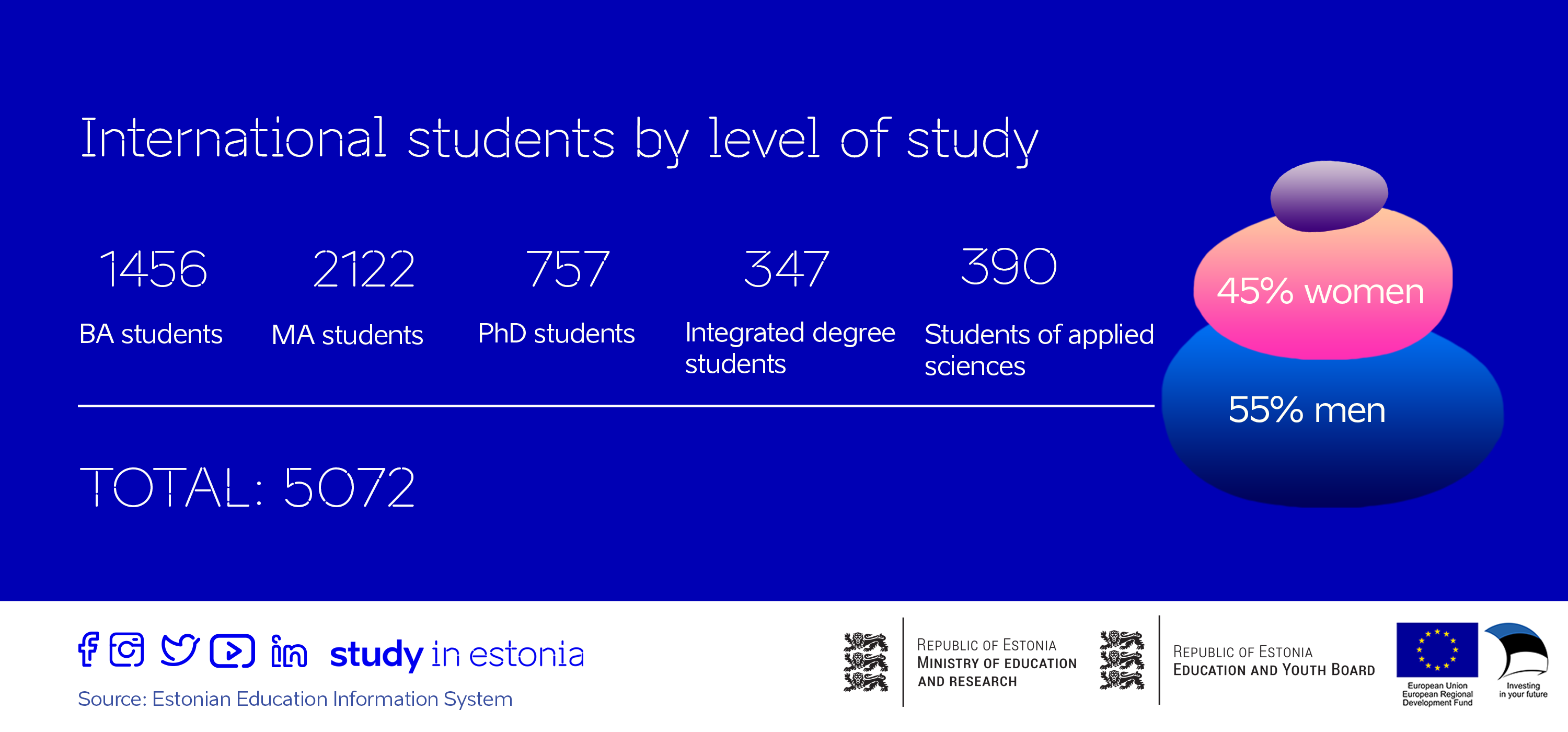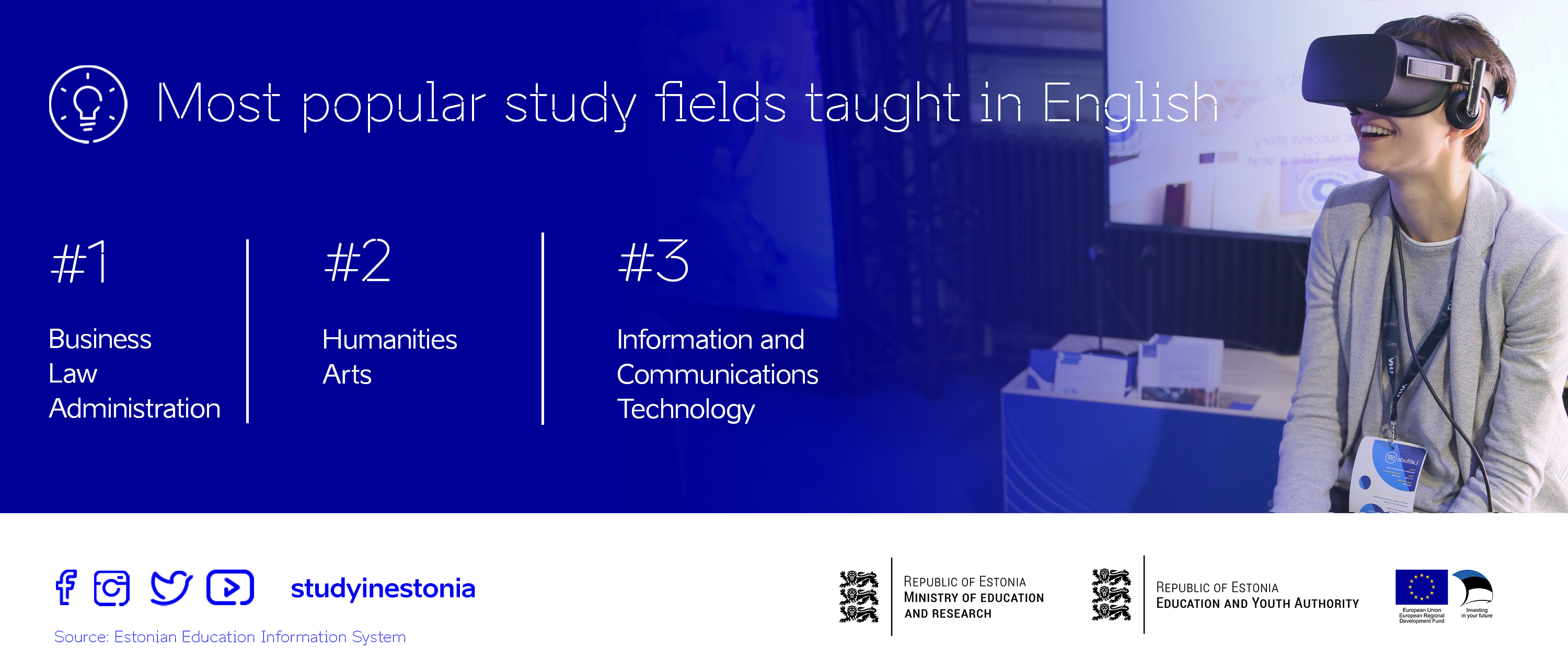
International degree students by level of study 2021/2022
The analysis also looked at how much international students contributed to the Estonian economy in taxes paid on their work income. In the academic year 2020/2021, they paid 3.6 million euros in income tax and 7.8 million euros in social tax, which is an increase of more than a million euros year on year. The total tax receipts from international students who graduated in academic year 2019/2020 and continued working in Estonia was 4.5 million euros.
Eero Loonurm, head of the Study in Estonia programme at the Education and Youth Authority foresees an even greater role of international graduates in the future. "The most likely to benefit from the economic impact of international students and graduates are international businesses in Tallinn and to a lesser extent in Tartu where the working language is English. The analysis also reveals that it would be important to develop measures to help international students acquire internships in the public sector. In the developed world, international students are considered a part of the talent policies of central and local government institutions. We should seek solutions to make sure that the benefit provided by international students would extend across the whole country," said Loonurm.
Facts:
- The number of working international students was smaller than in previous years, but their earnings were greater.
- Labour taxes paid for international students and graduates of academic year 2019/2020 amounted to 16 million euros.
- The number of international graduates who stayed working in Estonia was on the rise: there were approximately 500 international graduates of 2019/2020 in the labour market each month.
- The most likely to work besides studying are international students in information and communication technologies (ICT); engineering, manufacturing and construction; and business, administration and law.
- Compared to local students, international students are more vulnerable in the labour market: their contracts are less secure and their number of jobs worked is higher.

- The most poplar fields of study taught in English 2021/2022
- Continue reading more Study in Estonia news:
- https://monitor.icef.com/2022/01/estonia-continues-to-build-its-foreign-enrolment
- https://studyinestonia.ee/news/20212022-enrolments-estonian-universities-see-20-growth
- https://studyinestonia.ee/news/welcome-bags-all-new-international-degree-students
